Beyond the Page: Navigating the Enchanting Realm of Book-to-Movie Alchemy
The familiar saying, “The book is always better than the movie,” often reverberates through literary discussions. But is it truly a hard and fast rule, or could it be an invitation to cinematic magic waiting to be discovered? Let’s dive into the fascinating realm of book-to-film adaptations, where we’ll uncover the challenges, celebrate the successes, and explore how these adaptations reshape our moviegoing experiences. It’s a rich tapestry woven from imagination, creativity, and the timeless interplay between words and visuals.
The Cinematic Tightrope: When we dive headfirst into the rabbit hole of a mesmerizing novel, characters breathe, settings pulse, and every twist feels like a private adventure. It’s a wild, deeply personal ride, shaped by the author’s vision but painted with your imagination. Then comes the allure of the big screen, waving, saying, “Let me have a go.” Suddenly, it’s a high-stakes tightrope walk — balancing the book’s soul with the demands of cinematic magic. How do filmmakers honor the heart of the page while spinning it into moving images?
Trimming the Tale: Adapting a book into a film isn’t just a creative symphony—it’s an act of artistic alchemy. Filmmakers face the near-impossible challenge of distilling sprawling plots and layered characters into a sleek, two-hour spectacle. Do they tiptoe around the edges, staying slavishly faithful to the text and risking a flat, oversimplified retelling? Or do they take the bold route, bending the story’s form to fit the screen while keeping its essence alive? It’s a maze of choices, each one capable of shifting the narrative and how the audience connects with it.
Take The Lord of the Rings trilogy, for instance—Peter Jackson had to make some tough cuts to keep the epic tale rolling. One of the most noticeable omissions? Tom Bombadil, that quirky, mysterious figure beloved by readers, who didn’t make it to the big screen. While some fans mourned his absence, the decision helped streamline the story, letting the main narrative shine. Interestingly, Bombadil’s story found new life in The Lord of the Rings: Rings of Power, proving that no character is ever truly gone. Then there’s The Shining, where Stanley Kubrick boldly reimagined Stephen King’s haunting novel, stripping away the supernatural layers to focus on the chilling psychological horror, a move that left the audience with something entirely different, yet equally compelling. In both cases, the essence remains, even if the journey takes unexpected turns.
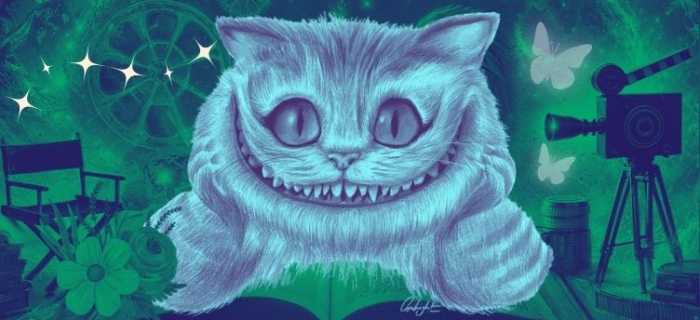
Casting Conundrum: As readers, we craft our own versions of characters—giving them faces, quirks, and attitudes in our mental movie. Then comes the casting call for the big screen, where one wrong pick can either deepen our connection or shatter it completely. Filmmakers walk a tightrope, trying to capture that elusive vibe without stumbling into box office disaster. Because, as Jean-Luc Godard slyly put it, “You can’t kiss a movie,” but the characters on screen can still ignite anything from swoon-worthy adoration to deep, complicated love. And yet, maybe we should try not to be too harsh when the casting doesn’t quite match our mental blueprint. If the rest of the movie hits the mark, who’s to say it’s wrong? After all, what’s ‘good’ is subjective. The Courage to Be Disliked reminds us that no two people share the same universe—each of us sees the world through our unique lens. So, if no two realities are identical, why should a casting choice feel like a betrayal? Maybe it’s just another take on the story, waiting to be appreciated.
The Societal Impact: Movies aren’t just celluloid dreams—they’re mirrors, reflecting and reshaping how we see race, gender, and social issues. A well-placed, positive representation on screen can dismantle stereotypes and spark real change. Take It Ends With Us as an example. The discussions about its adaptation—casting choices, aesthetics—have often overshadowed the core message of the book and its film version. Instead of focusing on the difficult, necessary conversations about domestic abuse, much of the discourse became fixated on whether the actors ‘fit’ the characters we’d imagined. This completely sidesteps the story’s original purpose, which was written to provoke empathy and reflection. It’s a reminder that storytelling isn’t just entertainment—it’s a force meant to shift perspectives, one frame at a time.
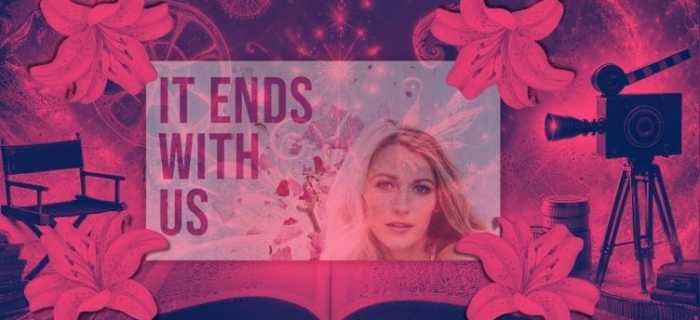
Diverse Voices and Representation: Adaptations have the power to reshape narratives, allowing filmmakers to modernize stories, diversify casts, and bring representation to the forefront. However, as with It Ends With Us, when too much attention is given to casting and aesthetics, it can overshadow the deeper messages the story was meant to convey. The inclusion of diverse voices isn’t about ticking boxes—it’s about making stories more relevant and reflective of the world we live in. When done right, representation in cinema enhances the narrative, reaching a wider audience and amplifying its core message. It’s a reminder that both films and books succeed when they broaden our understanding of not only the characters but also ourselves and the society we inhabit.
The Power of Changes: Not all changes hit the same in the ever-evolving world of adaptations. Some, like the anime Usagi Drop, rewrite controversial endings to offer a conclusion that feels more satisfying to viewers — although, let’s be honest, manga-to-anime adaptations could fill an entire article of their own. But since we’re diving into the realm of film here, that’s a story for another day. Others, like the altered ending of the Watchmen movie, spark heated debates, challenging that fine line between honoring the original’s boldness and bending to mainstream tastes. But maybe we should treat adaptations as different versions of a multiverse—each one a parallel take on the same story. This way, if one version rubs us the wrong way, we can always ‘move back’ to the original that stole our hearts. It’s like revisiting an old friend, whether through the book that first gripped us or the film that became a comfort watch. The multiverse of stories allows us to find the version we connect with most, without feeling like the ‘wrong’ adaptation erases the impact of the original. After all, adaptations don’t rewrite the past—they just offer another door to step through.
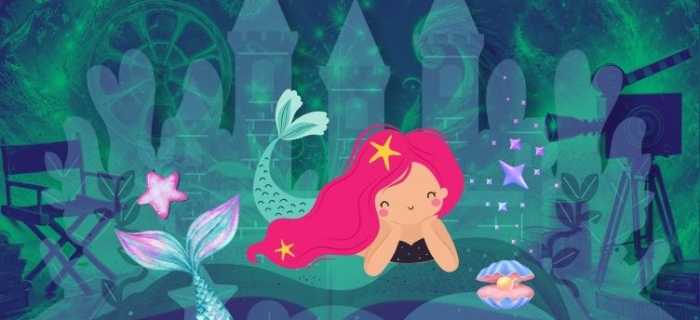
Inclusivity vs. Nostalgia: Casting choices, like Halle Bailey stepping into the iconic role of Ariel in The Little Mermaid, ignite passionate debates, often pitting inclusivity against the nostalgic attachment to how things ‘used to be.’ The pushback against change bumps up against the undeniable value of diverse representation, which only enriches storytelling. These casting decisions transcend mere fantasy; they become mirrors of our societal values and what we choose to embrace or reject. And speaking of casting, let’s not forget the latest buzz around Gal Gadot playing the Evil Queen in the upcoming Snow White adaptation. Some are quick to point out that, once again, the Evil Queen is more beautiful than Snow White—but honestly, hasn’t that always been the case? Even Once Upon a Time had Lana Parrilla’s Regina captivating us all with her beauty and complexity. It’s woven into the fabric of the story: the Queen’s obsession with beauty, forever casting a shadow over Snow White. Maybe the real twist isn’t that the Queen is more beautiful, but that the narrative keeps making us question why beauty was the battleground in the first place.
Authors in the Adaptation Process: The dream of having authors actively involved in the adaptation process, ensuring fidelity to tone and vision, is an ideal scenario. However, the cinematic journey is often fraught with practical challenges. When the original creators aren’t directly part of the adaptation, it becomes a delicate balancing act—preserving the essence of the book while interpreting it for a visual medium. Neil Gaiman is a prime example of an author who has navigated this transition with impressive finesse. His involvement in the adaptations of Sandman and American Gods shows a keen awareness of the need for inclusivity and modern reinterpretation. Both series give space for these updates, allowing for more diverse representation and nuanced shifts that speak to today’s audiences. Series adaptations, by their nature, allow room for this kind of evolution, while films, with their condensed format, often can’t explore such layers in depth. That said, Coraline, which celebrates its 25th anniversary in 2024, stands as a brilliant example of a film adaptation that did justice to the original work. Gaiman’s eerie, atmospheric tale was faithfully brought to life, with Coraline’s trade dress—her iconic yellow raincoat and blue hair—becoming instantly memorable and a lasting visual emblem of the story. Even in the compressed form of a feature film, Coraline managed to honor Gaiman’s original vision while carving out a lasting cultural space of its own.
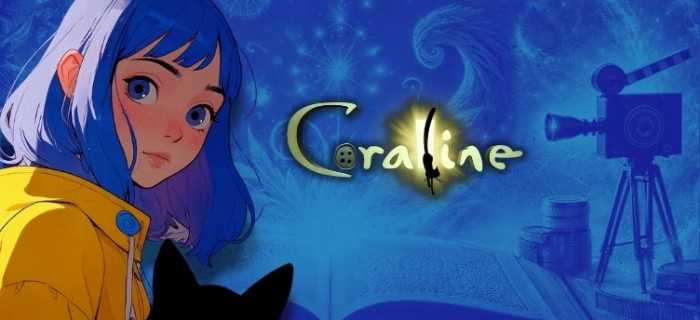
Economic Ripples: Beyond the mesmerizing glow of the screen, movies send forth economic ripples that reverberate through various sectors. Successful adaptations transcend entertainment, triggering a cascade effect that shapes fashion trends, music charts, and even theme park empires. While we often romanticize cinema as a purely artistic endeavor, there’s no denying the economic forces at play. Some adaptations, such as Harry Potter, have evolved into cultural phenomena, becoming more than just stories—massive commercial ecosystems. From merchandise and tie-ins to entire theme parks, these stories extend far beyond the screen, shaping industries and defining eras. It’s a reminder that, while art drives creativity, it also moves economies.
Fan Acceptance: Adaptations, by their very nature, walk a tightrope between adoration and backlash. Fans, fiercely loyal to the worlds they’ve imagined through the pages of a book, often view changes as sacrilegious tweaks to something sacred. On the flip side, some fans embrace creative liberties, recognizing that visual storytelling has its own set of demands. But it’s not just about winning over the die-hard fans—new audiences are equally important. After all, an adaptation’s success isn’t only measured by how well it pleases those who know every detail by heart, but by how it draws fresh eyes into the fold, expanding the story’s reach and impact. It’s a balancing act between respecting the core material and innovating enough to bring new fans into the world. In the end, fan acceptance becomes a nuanced metric of success, not just for staying faithful, but for breathing new life into a story that can now be experienced by more people than ever before.
The Journey from Page to Screen: The alchemy of book-to-movie adaptations is a delicate dance, a balancing act between creative interpretation and a deep respect for the source material. Whether it’s navigating controversial endings, welcoming diverse voices, or embracing bold changes that reshape narratives, the magic happens when films honor the essence of a book while still offering a unique cinematic experience. So, with popcorn in hand, let’s stroll the winding path from page to screen, where each adaptation adds a new twist to timeless stories and expands the ever-evolving tapestry of storytelling.
Let’s dive deeper into the works mentioned, key touchpoints in exploring the vibrant world of adaptations and how they reshape familiar narratives into new experiences:
Watchmen: Challenging Narrative Conventions
Watchmen is a prime example of how adaptations can spark fierce debate. The film’s altered ending led to discussions about balancing mainstream appeal with the daring narrative depth of the original graphic novel. It’s a testament to how adaptations can either amplify a story’s boldness or tread more cautiously, raising the question: how far can you stray from the source before losing its soul?
The Little Mermaid: Casting Waves of Change
When Halle Bailey was cast as Ariel in The Little Mermaid, it stirred conversations about inclusivity versus nostalgic expectations. This choice not only reignited interest in the beloved fairy tale but also became part of a larger conversation about diversity in Hollywood. Casting becomes more than just filling a role; it’s about reshaping how we see familiar stories through a modern, inclusive lens. Sometimes, the biggest waves come from casting decisions that challenge the past.
It Ends With Us: Message vs. Aesthetics
It Ends With Us is another recent adaptation where the conversation around casting overshadowed the core message of the story. Fans of the book were quick to criticize the visual choices rather than engage with the film’s powerful themes of domestic abuse and survival. This serves as a reminder that while casting is important, staying true to the heart of the story—especially one as heavy as this—is where an adaptation’s true success lies.
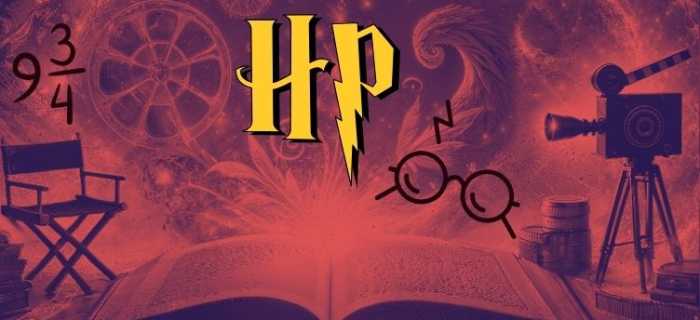
Coraline: Iconic Imagery and Lasting Legacy
Now celebrating 25 years, Coraline is a standout example of a near-perfect transition from book to film. The movie captured the eerie, atmospheric beauty of Gaiman’s story while introducing a highly memorable visual—Coraline’s iconic yellow raincoat and blue hair. That look became instantly synonymous with the character, proving that even in condensed cinematic form, adaptations can etch themselves into pop culture’s collective memory.
Harry Potter: Franchises That Shaped Generations
Some adaptations don’t just succeed; they redefine entire generations. Harry Potter is more than just a beloved story—it has become an economic powerhouse. Some franchises, like Harry Potter, extended far beyond their narrative origins, from theme parks to merchandise empires, leaving an indelible mark on global culture. They remind us that a great adaptation can transform from a simple film into a cultural phenomenon that shapes decades.
By zooming in on these pivotal works, we see how adaptations can vary wildly in approach—sometimes sticking to the script, other times rewriting it entirely. But at the heart of every adaptation lies the same goal: to take what we love on the page and bring it to life in ways that surprise, challenge, and delight.
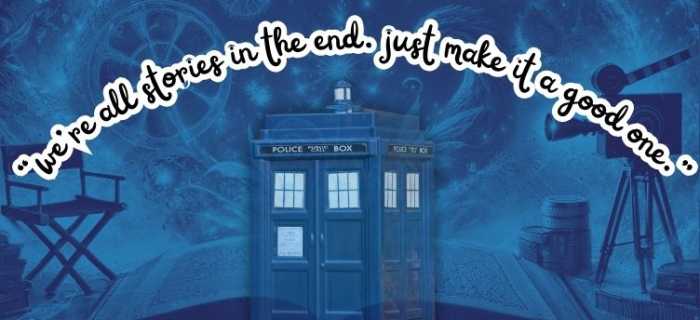
As the Doctor once said, “We’re all stories in the end. Just make it a good one.” It’s a simple yet profound reminder that stories—whether in books, films, or our own lives—shape us in ways we often don’t realize. Books have the power to take us on journeys beyond time and space, to show us possibilities we never imagined. They challenge, comfort, and inspire us. And when those stories are adapted to the screen, they continue to evolve, proving that a truly great tale isn’t bound by a single form—it lives on, forever shifting, much like the Doctor’s timeless adventures.
In the end, whether we’re revisiting beloved stories or discovering new ones, adaptations remind us that no tale is ever truly static. Each retelling breathes new life into timeless narratives, proving that the magic of storytelling transcends the page, the screen, and even our expectations.
What do you think? Leave a comment.
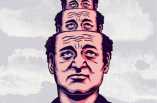
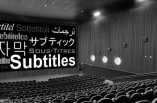



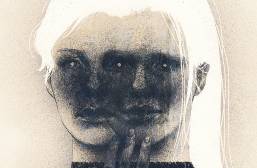

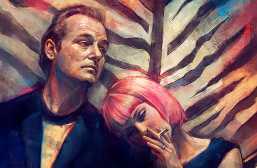
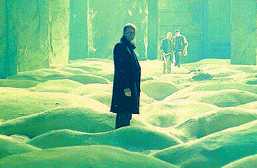


Great job condensing such a rich, multifaceted topic into so many easy-to-understand, digestible parts! Extra kudos points for the title (I love the idea of books and movies as part of an “enchanting alchemy,” not as adversaries) and your images. (I rarely see Coraline with her as-intended blue hair, and she looks lovely).
Personally, I struggled with the casting of Harry Potter, but over time, I grew to love the on-screen versions.
Great post. This idea of a ‘mental blueprint’ for characters is so tru. Our imagination often clashes with what we see on the screen.
It’s a good reminder that these adaptations also bring new audiences into the fold. That’s something that wasnt’ fully explored here, how many people discover books they wouldn’t have otherwise read because of a movie adaptation.
I know, right? I think this is a big pro 😉
I think dat movies shuld be more like the book tho. Harry Poter left out so much stuff.
Why do they leave out all the fun parts?
Don’t worry, everything will be included in the upcoming HBO series.
I agree with the multiverse of stories idea! I wasn’t into the Dune movie that much, but the book is always there for me to go back to. Plus, different adaptations mean different audiences, which keeps the story alive for new generations.
So what are people’s most favorite film adaptations?
I love the brooding strung-out atmosphere of The American Friend. Not sure it works as a thriller (despite the over-insistent score saying otherwise) but as a moody piece of 70’s existentialist cinema, it doesn’t get any better. The combination of an underplaying Dennis Hopper in a cowboy hat and Robby Muller’s expressionistic colour photography (recalling that other Hopper), is hypnotic.
The Talented Mr Ripley and Plein de Soleil are some of my favourite movies. I spent the best holidays of my life in the island of Ischia because of this films.
Tom Ripley is one of the greatest literary creations.
Ripley’s game is criminally underrated. It’s one of Malkovich’s best, and rubber face Doug Ray Scott one speed acting is even bearable in it. Highly recommended.
Cough. Lord of the Rings. Cough.
The film critic Barry Norman said something that I believe should be dropped here: good films can only be made from bad novels or good short stories.
The whole casting debate about Halle Bailey was ridiculous. It’s about time we see more diversity in movies, and people who complain about it are stuck in the past.
I remember being disappointed by the absence of Tom Bombadil in The Lord of the Rings movies, but I get why they did it.
Adapting requires making tough calls to keep the pacing right for cinema. 🙂
As a fan of Neil Gaiman I love his involvement in the series. his input really helped to maintain the integrity of the story while adapting it fora more modern audiences.
Coraline was an excellent adaptation!!
Successful adaptations don’t just tell stories, they can shape entire industries.
Circlejerks need to stop complaining. If one version of a movie doesn’t resonate with you, the original book is always there, waiting.
Couldn’t agree more!
When I saw Halle Bailey cast as Ariel, I was thrilled by the inclusive direction. But I was the only one.
Kubrick’s version is a classic!! But it’s wildly different from King’s original book. Yet, it works because it reinterprets the material rather than copying it exactly.
Sometimes they change stuff way too much, u know? Like, in Percy Jackson, they made Annabeth blonde in the movies when she’s supposed to have brown hair! That kinda stuff drives me crazy, but I still love seeing the books come to life.”
I never really understood the obsession with keeping things the same in adaptions.
I know, right? Adaptations, not carbons copies…
I do miss those deep character moments from the books that’s not always in the movies.
I dont really care about all the changes in the films.
Good writeup. But you could have touched more on how adaptations like Game of Thrones (the early seasons, at least) managed to stay close to the books, but even they had to start diverging when they ran out of material.
Adaptations are breathing entities that evolve with the filmmakers vision.
Just re-watched Shawshank again. Tim Robbins and Morgan Freeman turn in amazing performances – so real it hurts. Best adaptation ever.
Please someone, put these two in a film again!
it is very sad, however, that many younger people have only seen this on that god forbidden AMC which seems to run it every other day (in between endless self promotional ads) in it’s chopped compressed edited to hell and back form.
Damn shame, because it loses so much.
When I watch movies, I don’t even notice the changes from the books. For example The Fault in Our Stars had some different scenes, but the important stuff was there.
I agree that adaptations like The Shining can be vastly different yet still successful. I’d wanna add that Kubrick’s version became a masterpiece in its own right, separate from Stephen King’s vision.
I remember the outrage when Jennifer Lawrence was cast as Katniss in The Hunger Games.
I guess the production also has rules that limit certain things as well
Transforming stories into films has long been an effective method for introducing characters to audiences. The initial Lord of the Rings series stands out as a prime example of a movie adaptation that maintains the essence of the author’s vision.
We need to start rethinking our nostalgia.
Dude I love the ending of Usagi Drop!
Not all adaptations have to be loyal to be good. 😀
I don’t know. I hate how some movies change so much. Like in The Maze Runner, they completely skipped important stuff from the book. It made the movie confusing.
I was frustrated when Divergent left out important parts from the book, like Tris internal battles.
I think if authors were part of the casting team, the team wouldn’t struggle with getting the right actor or actress for the role, because the author is the one who created those characters
As the contrast between books and their adaptation are ever prevailing. I’ve slowly learned to treat the adaptations as their own individual project rather than criticizing its book accuracy
The journey from page to screen is a complex alchemy, transforming the intimate experience of reading into a communal visual spectacle. This process raises questions about artistic integrity, cultural representation, and the evolving nature of storytelling. As adaptations continue to bridge literature and cinema, how can creators honour the original work while embracing the unique strengths of film to enhance the narrative??
Hey, great article that was a pleasure to edit! Looking forward to your next piece!